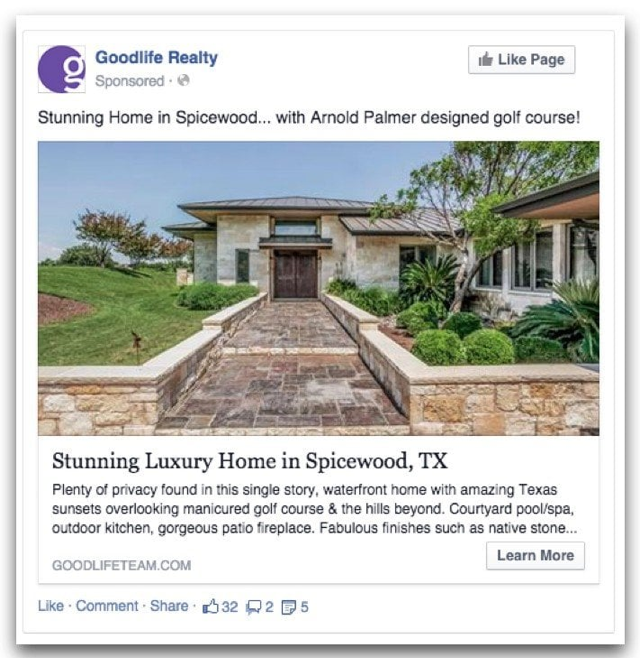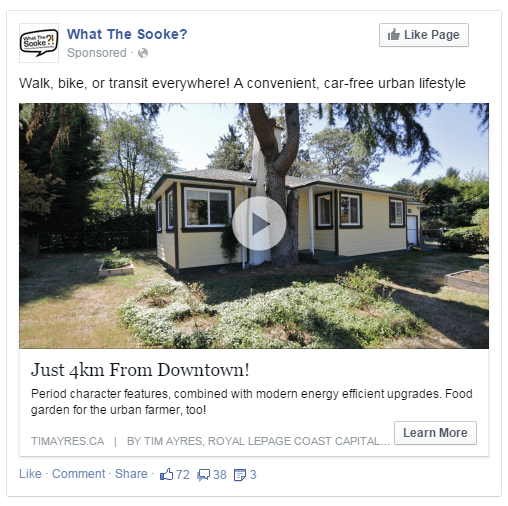Facebook advertising is one of the most popular lead acquisition channels for real estate agents. A staggering 79% of real estate agents use Facebook to generate leads.
To make the most of the platform, you need a strategy in place. With plenty of other Facebook real estate ads available for buyers to click on, you need a plan for making your promotions the most click-worthy.
The answer here is ad copy. Along with property images, your ad copy has to be interesting enough to spark buyers’ interest. Speak to their wants, and your ad copy will attract clicks.
To help you engage more leads, we’re breaking down the main components of ad copy and nine ways to make it more compelling. With strong, click-worthy copy, your Facebook ads will drive more clicks and lead the way for more conversions.
The basics of Facebook ad copy
The first step in improving your Facebook ad copy is understanding where it belongs. There are four key areas where you can insert text.
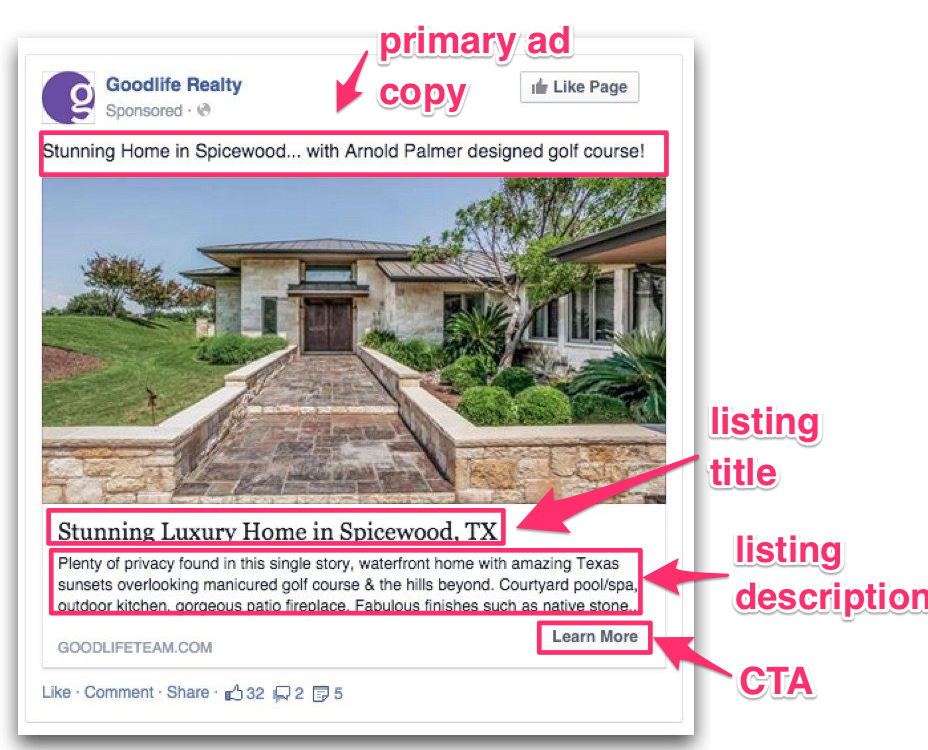
- Primary ad copy: If the readers’ eyes are scrolling down, this copy will be the first part of the ad that they see. To convince people to click, mention the best features and unique selling proposition of your listing. Make sure the important aspects come at the beginning of your copy as many won’t read the whole thing.
- Listing title: This title needs to be brief, yet catchy. In a single line, you want to mention the basic information—location, property type—along with the most attractive features of the listing.
- Listing description: While this section is a bit less eye-grabbing, you should still use it to promote the best features of your listing. Leads who are especially engaged by the primary ad copy, listing title, and photo will want to read the description to quickly find out details.
- CTA(Call to Action) button: A clear short phrase is all you need for a CTA to drive leads to your landing page. “Learn More” is the most common CTA text, and it works well with most real estate ads.
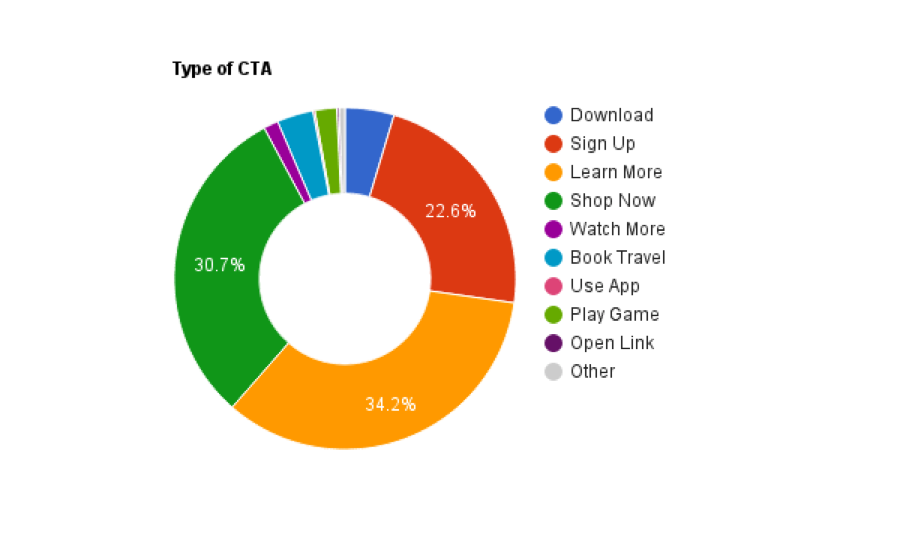
[Source]
These four areas of Facebook ad copy are your opportunities to attract leads. You have to find words that don’t just convey the basic info of your listing, but also speak to your key buyers’ emotions and interests and push them to engage.
9 tips for writing real estate Facebook ad copy
It doesn’t matter how great of a deal a property is—the success of your Facebook ad depends on how well you frame the property info. You have to consider your target buyer’s perspective to figure out what copy will excite them and persuade them to click. To help you strategically craft your copy, here are nine tips for writing compelling Facebook ads that motivate clicks.
1. Appeal to your buyers’ psychographics.
While general ad copy might seem more inclusive, it’s more likely to confuse buyers and leave them disinterested. Instead of trying to appeal to every lead, use specific language that’s targeted to your key buyers’ psychographics.
Psychographics are the psychological attributes of buyers, such as desires, lifestyle, and interests. They help to explain why target buyers purchase your product, so they’re incredibly useful to include in your Facebook ad copy.
For example, the psychographics of a luxury buyer might include having an in-home theater. To target that interest, you should add the phrase “movie theater” to your Facebook ad copy for a home with that feature.
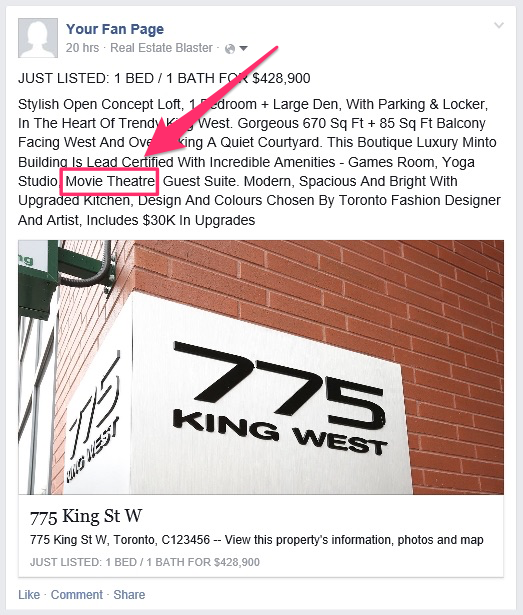
[Source]
Targeting these psychographics in your ad copy brings results—not just in clicks, but in the perceived value of your listing. Zillow found, for example, that including the phrase “movie theater” increased the value per square foot of homes by 70%. With this potential growth, it’s worthwhile to do your research to identify and incorporate your key buyers’ psychographics into your ad copy.
2. Be transparent with details.
Positive, exciting language is perfect for highlighting your listings’ best features to buyers. At the same time though, overloading your ad with emotional language can make viewers skeptical of the listing, as though you’re trying to hide worse parts of the property.
To build trust in buyers, it’s best to be transparent about your listings’ essential details—number of square footage, bedrooms, etc.—in the ad copy. Sharing this info upfront will help buyers quickly evaluate whether they’re interested in the listing and want to click.
Donovan Real Estate in this example below includes a brief summary of a home’s features in the main ad copy and listing description.
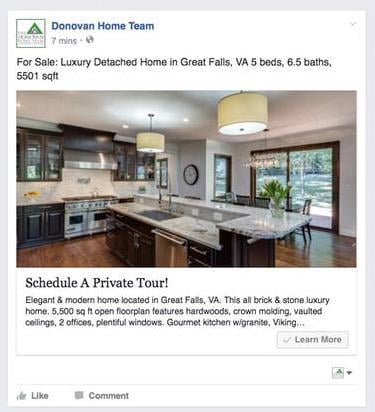
[Source]
By conveying the straightforward details of your property, you can attract high-quality leads that will pursue what you’re offering.
3. Use FOMO.
FOMO—the “fear of missing out”— refers to that feeling of anxiety you get at the thought of a lost opportunity. For example, you might see pictures of your friends on social media on beach vacations, and suddenly you feel as though you need to book your own group trip.
Inducing FOMO is a classic tactic copywriters and marketers use to make people take action. You frame the purchase as an opportunity that could easily be missed, and suddenly consumers are driven to purchase.
Utilize FOMO in your Facebook ad copy by using language that encourages an immediate purchase. For example, the ad below stresses how quickly the listing will sell with phrases such as “going to sell FAST” and “before anyone else sees it.”
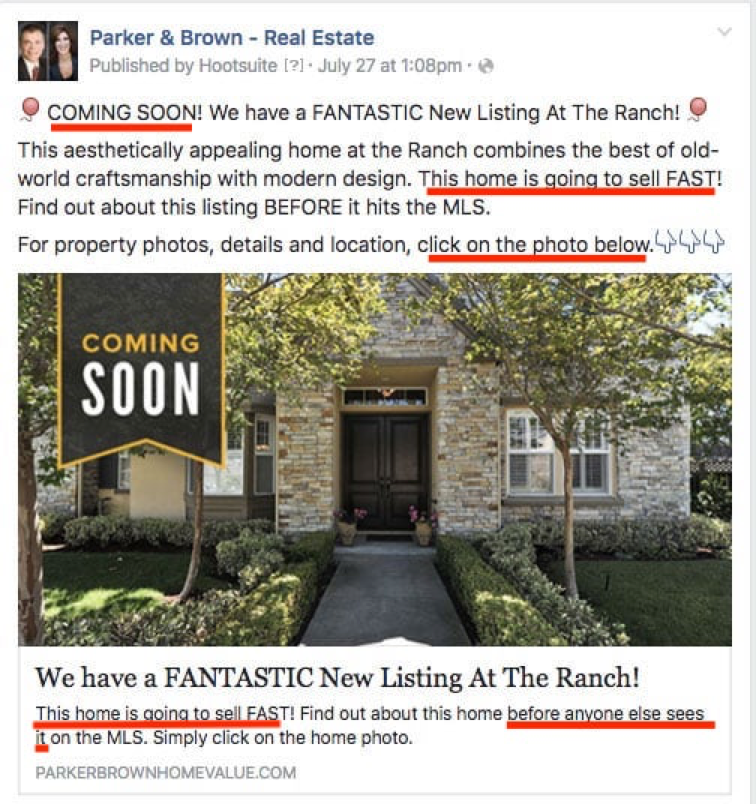
While FOMO can be very effective, you shouldn’t overdo it. If you use too much of this heightened language, the ad copy will start to feel insincere to viewers. Use no more than three FOMO phrases to motivate buyers to click without overwhelming them.
4. Display contact info.
Some leads might like your Facebook ad enough to contact you immediately. If you include your contact info in the ad, these leads can instantly reach you without even needing to click.
As the boldest part of the ad, the listing title is the optimal section for including your contact info. All Marblehead, in the example below, includes the listing agent’s name and phone number so leads can reach him at a glance.

[Source]
While every lead might not immediately call you, leaving your contact info opens up the opportunity for a greater possibility of instant connections and faster conversions.
5. Sprinkle emojis here and there.
Emojis are becoming an increasingly popular way to humanize Facebook conversations. Studies show that 92% of the internet population use emojis to communicate online.
Even as a real estate professional, occasionally using emojis can make your ads more relatable and fun. Buying a property is a serious decision, so it’s nice to lighten the potential investment with emojis.
Woodleaf Realty, for example, A/B tested using emojis in their ads and found that conversions increased with emojis.

While a few emojis here and there are fun, using too many can make your ad seem unprofessional. Use three at most to maintain a friendly feel while still seeming credible. This welcoming tone will push more leads to click and learn more about your property.
6. Use data to back up your descriptions.
Writing descriptions, for the most part, is subjective—you use your own gut to decide which phrases will attract your target buyers most. But in our data-driven world, even writing descriptions can become objective with engagement stats on specific phrases.
Paul Anglin, an economist at the University of Guelph, conducted a study analyzing 20,000 real estate ads. His main aim was to find how words used in the copy would affect the price and time until sale. This is what he found:

[Source]
According to this data, “beautiful” and “landscaping” are both excellent choices as they cut the market time and increase the selling price. Assuming these phrases actually match your property, their strong performance suggests that including them in ad copy will increase clicks.
7. Talk about exciting landmarks nearby.
You know what they say—location, location, location!
Many people care just as much, if not more, about the places nearby their home as the property itself, so it’s important to highlight any nearby attractions in your ad copy.
For example, check out this ad by Goodlife Realty:
The Arnold Palmer-designed golf course is mentioned to attract any golf enthusiasts who are browsing homes in this price range.
To make your attraction-focused copy even more powerful, you can use Facebook targeting for an audience that fits the landmark. Targeting these people, along with mentioning the attraction in your copy, will get you more qualified leads in no time.
8. Add links in your text to get more clicks.
You might think that the CTA button on your Facebook ad is enough to gather clicks, but many viewers often miss the button. Adding links to your main ad copy is a great way to avoid losing those leads and improve your click-through rates.
In the example below, CMK entices viewers to click with a link for previewing the home.

[ Source ]
Avoid using longer links as they’re distracting in your ad copy. To make your ad look more appealing, you can shorten links with Bitly.
With brief links included in your copy, your ad is more likely to gain clicks from leads.
9. Experiment with informal language.
People go to Facebook mainly to catch up with their friends and family, so posts on the platform often have a very casual tone.
Though you want to maintain a professional feel, it’s worth experimenting with informal language to match the rest of Facebook’s content. Using this language can make your listing seem as familiar and welcoming as a friend’s post, so leads feel comfortable clicking on it.
In the ad below, for example, the copy features several exclamation points that make the listing feel more informal and fun.
In striking the right tone though, you need to be careful to not discriminate in your ad copy. Here is a guide on using inclusive language to ensure your ad copy is within fair housing guidelines.
Balancing a casual tone with professional language—such as the actual property details—allows you to seem both friendly and welcoming on the platform.
Test until you find the perfect formula
While all of these strategies are helpful, some will work better than others for different types of properties. Try out each of the hacks, and measure the results to see which perform best for your listings. You can assess tactics with separate Facebook ads, or run A/B tests of a single ad to compare copy length, phrases, and more.
Experiment as much as you can to learn about your listings’ different audiences. The more you test, the more you’ll be able to adapt your ad copy to attract more clicks and lead to more sales.
No time to write? Use Boost.
Working as a real estate agent is a busy lifestyle. If you don’t have enough room in your schedule for optimizing Facebook ad copy, consider using a tool like Boost by HomeSpotter.
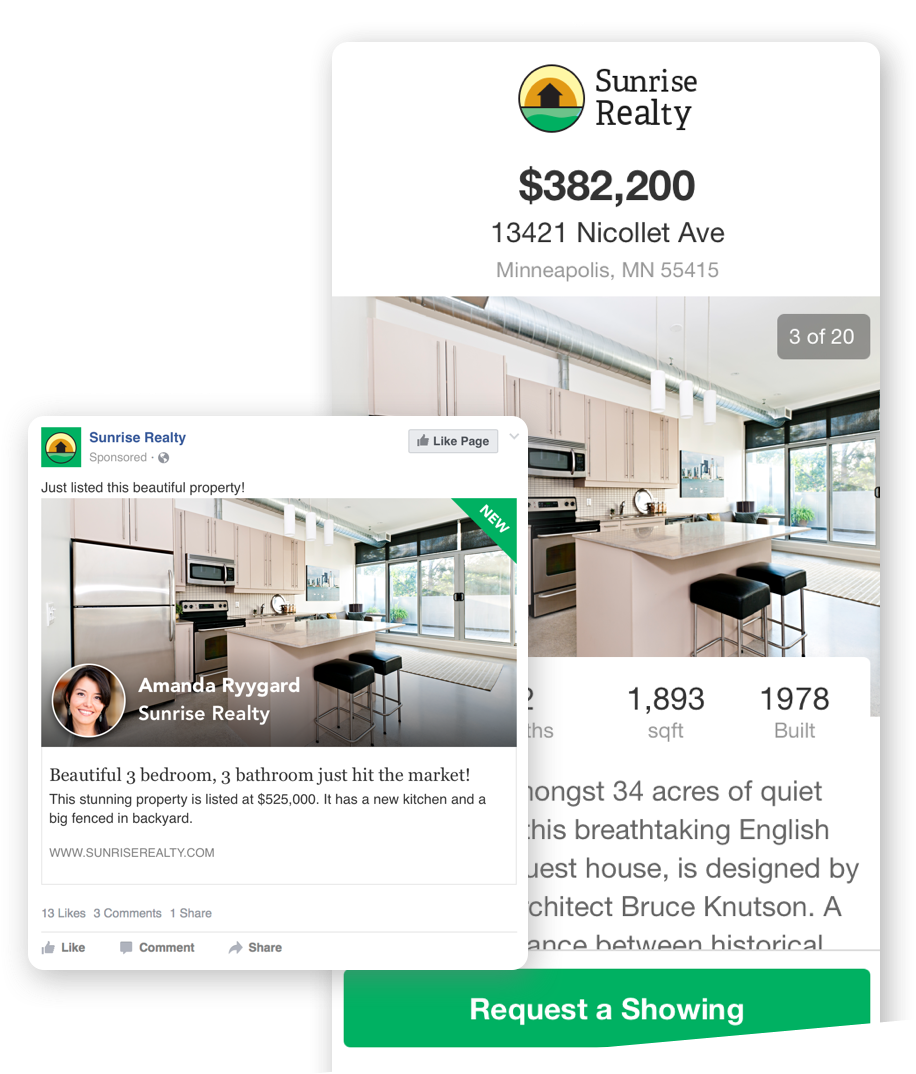
This tool automatically creates Facebook ads based on your listings with optimized copy, so you don’t have to spend time crafting language for the promotion.
To learn more about Boost, click here. You can even preview Boost-generated ads with your own listings.

